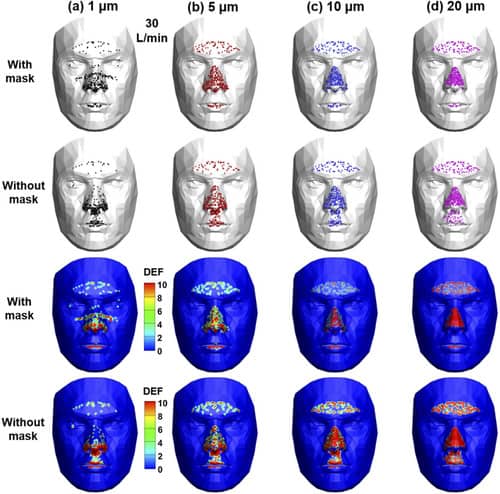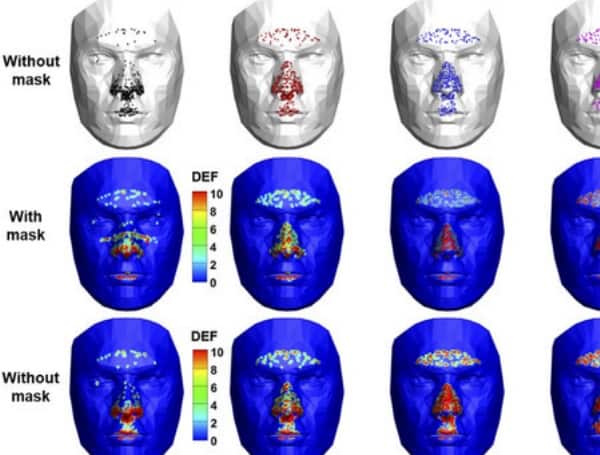Researchers at UMass Lowell and California Baptist University say that re-wearing a dirty mask or wearing it improperly, to stop the spread of COVID-19, can actually be worse than not wearing a mask at all.
Researchers assumed a 65% filtration efficiency of the mask, which is typical for a three-layer surgical mask. This study is not based on the nylon windsocks that have become reasonably fashionable or cloth fabric masks.
“Much to our surprise, by assuming zero filtration efficiency, wearing a mask leads to significantly higher deposition on the face for all particles considered (1 µm–20 µm) and in the airway for particles of 1 µm–10 µm [Fig. 7(a)]. With a 65% filtration efficiency, which is typical for a three-layer surgical mask, the corrected face deposition falls below the unmasked DFs for all particles, despite a close match for 15-µm particles,” as written in the study.
The study says a comparison of particle deposition on the face with and without a mask is shown in the figure below, for different particle sizes. Smaller particles give rise to more dispersed deposition on the face, regardless of wearing a mask or not.
For 1-µm (micron) particles, deposition is spotted around the eyes, which are venerable sites of bacterial or viral infections. Interestingly, wearing a mask leads to a higher deposition underneath the eyes than without a mask. As the particle size increases from 1 µm to 20 µm, more particles deposit on the nose and the forehead. In comparison to the deposition with a mask, one major difference is the enhanced deposition in the philtrum, the region below the nose and above the upper lip (second row).

Researchers say, “The deposition intensities were also compared with and without a mask in terms of the DEF in the third and fourth rows, as shown in the figure above respectively.”
“Again, the dispersed deposition for 1-µm particles, the increasingly concentrated deposition on the nose and forehead with particle size, and the higher deposition on the philtrum are more vividly displayed with the clear contrast of the DEF colors.”
The study finds that masks slow down airflow, and with larger breaths, makes a person more likely to breathe in particles, especially if the mask efficacy is limited. A dirty mask is much worse and can’t filter out the smallest particles or droplets, according to the study.
A CDC study references the use of cloth masks in slowing the spread of COVID-19, “Experimental and epidemiological data support community masking to reduce the spread of SARS-CoV-2. The prevention benefit of masking is derived from the combination of source control and personal protection for the mask wearer,” says the CDC, “The relationship between source control and personal protection is likely complementary and possibly synergistic, so that individual benefit increases with increasing community mask use.”
However, the CDC says that further research is needed to expand the evidence base for the protective effect of cloth masks and in particular to identify the combinations of materials that maximize both their blocking and filtering effectiveness, as well as fit, comfort, durability and consumer appeal.
In August, Duke researchers rated 14-masks – an N95 mask, a three-layer surgical mask, and a cotton mask as the top protectors against COVID-19. The study, published in the journal Science Advances, rated a 2-layer, pleated cotton mask at No. 5. A bandana and gaiter-style neck fleece were rated worst among 14 masks tested.
Publishers Note: While The Free Press will always be free for our readers, and ad-supported, we are asking our loyal readers to consider a monthly donation of $3 to maintain our local journalism and help us grow, as we ramp up ad sales locally.
You can click here to support us.
We thank you all for your consideration and for supporting local journalism


